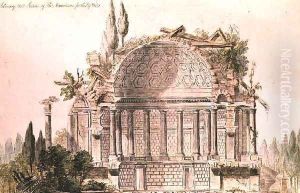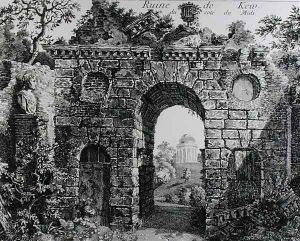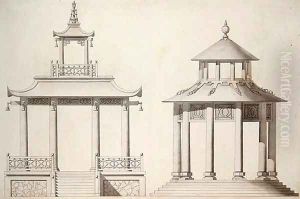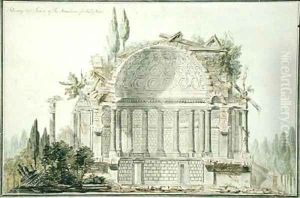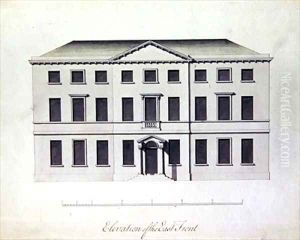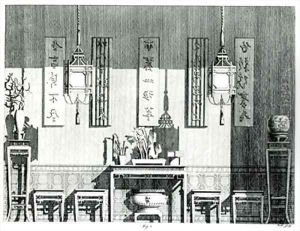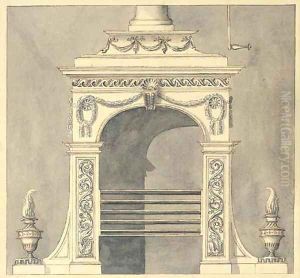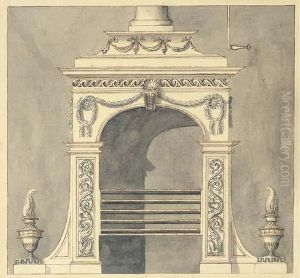Sir William Chambers Paintings
Sir William Chambers was a preeminent British architect, born on the 23rd of February 1723 in Gothenburg, Sweden, to a Scottish merchant father. His early life included extensive travel due to his father's business, which exposed him to various cultures and architectural styles. Chambers initially embarked on a career in commerce like his father but soon developed a passion for architecture. He studied drawing and architecture in Italy and France, under the guidance of leading artists and architects of the time.
After his studies, Chambers continued his travels, spending considerable time in China, which would later influence his work. The publication of his book 'Designs of Chinese Buildings' in 1757 was one of the first detailed studies of Chinese architecture by a Westerner and it contributed significantly to the 18th-century chinoiserie style in Europe.
Returning to London, Chambers swiftly established himself as an architect of note. He became a vocal proponent of the neoclassical style, advocating for a disciplined adherence to classical precedent. His reputation was bolstered by the patronage of King George III, for whom he served as the official architect. In this capacity, Chambers designed the iconic Somerset House in London. He was also responsible for the Pagoda at Kew Gardens, which reflected his interest in Chinese architectural forms.
Chambers's substantial impact on British architecture was recognized by his knighthood in 1769 and later his appointment as the Surveyor-General of the King's Works in 1782. He was also a founding member of the Royal Academy of Arts and served as its Treasurer for much of his career. His architectural legacy is complemented by his written works, particularly his influential treatise on architecture, 'A Treatise on Civil Architecture', first published in 1759. This book was widely regarded as an essential text for students of architecture and established Chambers as one of the leading architectural theorists of his time.
Sir William Chambers passed away on March 8, 1796. His contributions to architecture and the arts have left an indelible mark on the landscape of British cultural heritage and his works remain an enduring testament to the neoclassical movement of the 18th century.
